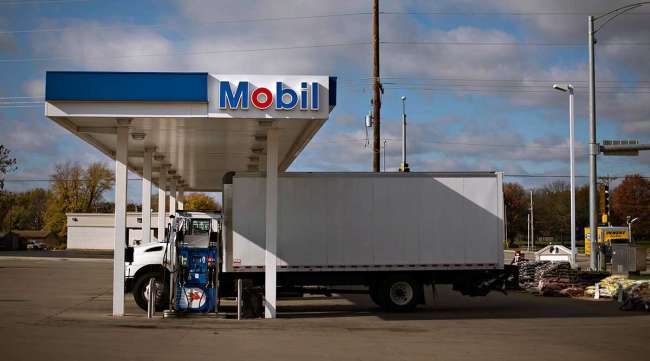Senior Reporter
Diesel Rises 1.6¢ to $2.507 as Oil Prices Reach Two-Month High

The U.S. average retail price of diesel rose 1.6 cents to $2.507 as crude climbed later in the week of July 24 to its highest price in nearly two months and Saudi Arabia announced it would make additional cuts in oil production, experts said.
Diesel now costs 12.8 cents more than it did one year ago, when the price was $2.379 a gallon, the Department of Energy said July 24. Regional prices for trucking’s main fuel rose everywhere.
The U.S. average price for regular gasoline jumped 3.4 cents to $2.312 a gallon. The cost is 13 cents more than it was a year ago, DOE’s Energy Information Administration said.
Weekly gasoline prices rose everywhere except in the West Coast region, where they were unchanged. With California listed separately, they fell in the West Coast region by 1.2 cents, according to EIA.
As for diesel, it was its fourth consecutive weekly increase, with the gains in that period adding up to 4.2 cents.
One less-than-truckload fleet executive said incremental differences in weekly prices can be tolerated.
“Diesel goes up a little bit, it goes down a little bit, but the stability of it makes it much easier to plan for and have a pretty good understanding of what is going to take place from a financial venue,” Randy Swart, chief operating officer of A. Duie Pyle Inc., told Transport Topics. A diversified fleet whose largest segment is less-than-truckload, A. Duie Pyle, which is based in West Chester, Pa., ranks No. 78 on the Transport Topics Top 100 list of the largest for-hire carriers in North America.
At the same time, demand for diesel is increasing.
Distillate fuel oil supplies, which includes ultra-low-sulfur diesel and serves as an indication of demand, rose to 4.2 million barrels a day for the week ending July 21, compared to 4.1 million a week earlier and 3.7 million barrels a year earlier, EIA said.
A. Duie Pyle was using about 36,000 gallons of diesel fuel per day during the fourth quarter of 2016 and the first quarter this year, Swart said. But that was reduced to about 34,500 gallons per day during the second quarter. “That was a result of our driver-education campaign on fuel efficiency and the addition of new, more fuel-efficient trucks,” he said.
All the mechanisms and technology on new trucks “give even an inexperienced driver a lot of feedback, which, from a fuel-efficiency standpoint, can make them a much more efficient driver very quickly because they are getting good feedback,” Swart said. These mechanisms include telematics applications that can determine when a driver is accelerating too quickly, he said. Improvements also derive from using automated manual transmissions that shift progressively, as well as from speed limiters, Swart said.
The latest generation of clean diesel heavy-duty engines in a Class 8 truck will save the truck owner 960 gallons of fuel a year, according to Allen Schaeffer, executive director of the Diesel Technology Forum. “When these benefits are compounded over the entire population of the clean diesel fleet, the 4.2 billion gallons of fuel saved between 2011 and 2016 is equivalent to almost 40% of the strategic petroleum reserve,” Schaeffer said.
Turning to oil, West Texas Intermediate crude futures on the New York Mercantile Exchange closed at $48.75 per barrel July 26, compared with $47.12 on July 19. The July 26 price was its highest closing price since May 30, when it was $49.66 a barrel.
Oil rose as Saudi Arabia pledged deep cuts in its crude exports, while Halliburton Co. said the shale boom is slowing down, according to Bloomberg News. Halliburton, which is based in Houston, ranks No. 5 on the Transport Topics Top 100 list of the largest private carriers in North America.
OPEC’s largest producer, Saudi Arabia, will limit exports to 6.6 million barrels a day in August, 1 million bpd lower than a year earlier, Energy Minister Khalid Al-Falih said and Bloomberg reported.
At the same time, U.S. crude inventories fell by 7.2 million barrels in the week ending July 21, compared with a week earlier, EIA reported. “At 483.4 million barrels, U.S. crude oil inventories are in the upper half of the average range for this time of year,” according to the agency.
The weekly U.S. rig count also fell to 950 during the week of July 21, two rigs fewer than the week before and 488 more than a year earlier, reported Baker Hughes Inc., an oil field services company.
“U.S. rig counts appear to be stabilizing versus rising continually each week,” said Stephen Sly, president of Stabilitas Energy Inc., a risk management firm in Overland Park, Kan.
Houston-based Baker Hughes ranks No. 14 on the Transport Topics Top 100 list of the largest private carriers in North America.




